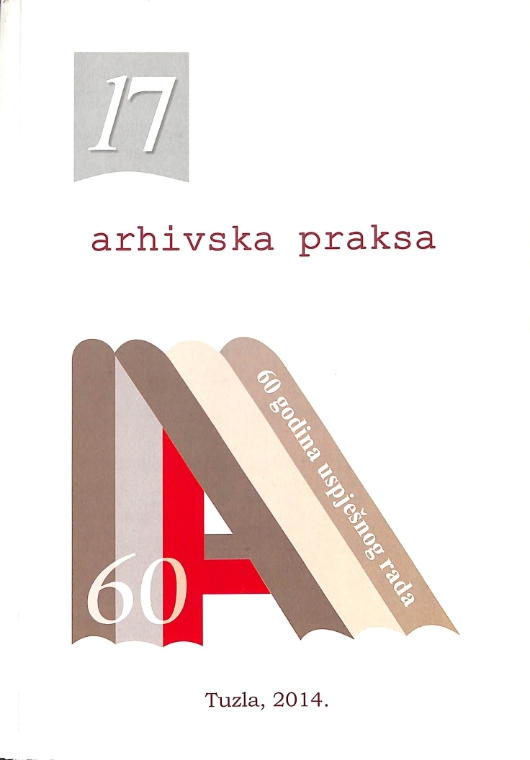Značaj klasične zaštite arhivske građe za savremeni oblik njene zaštite
The importance of classical protection of archival material for its continued preservation today
Author(s): Jovan Popović P.Subject(s): Archiving, Preservation, Electronic information storage and retrieval
Published by: Arhiv Tuzlanskog kantona
Keywords: Archives; archival material; archivist; legal regulations; microfilm; usage of archives; digitization of archive;
Summary/Abstract: One of the most important issues of protection of archival material is its storage. Keeping an archival material includes and requires a space for explorers and conditions for its use, as well. It can also be a problem for record keepers because it is really difficult to provide space for storing large quantities of archival materials in dedicated facility. This is one of the most important issues that archivists struggled with in history and nowadays in particular. At the same time question emerges–where and how the ancient archival material was stored, in what kind of space, shelves, and to what extent such conditions: air, light , micro-organisms, dust, humidity, microbial and protection from moisture, dust, etc., affected its sustainability and durability and what were the consequences of storing archives in such environment. The author of this, in his extensive career, encountered documents, particularly from earlier periods that were wonderful, rare, with beautiful calligraphy and nearly indestructible. Yet, in the second half of the twentieth century, a number of written documents increased to the extent of real industrial production of archives. New formats of records appeared - microfilm, microfiche, photocopies, optical disks, digitization and other. the transfer of the “classic” archival material (paper) to new forms (usually microfilm) preserves the original, source material, saves space occupied and increases its usage .Digitization, as a new form of record, is the creation of the original digital record, and transferring an analog material into digital form. Uniform policies and guidelines in most countries of the former Yugoslavia – that could be the basis for the digitization of the archives, do not exist, nevertheless digitization is very present.Digitization in culture extends to the level of citizen participation in all aspects of cultural life, which could be seen as the democratization of culture. Regardless, archival practice raises the question – what are the old and the new technologies, and further, what is the life cycle of new technology. it is shown so far that the only way to complete protection of archives is interaction between old and new technology.We find that digitalization should first “introduced” in the archival material that comes from the earliest dates, due to the small number of surviving documents, than to the archives categorized as a cultural good of great and exceptional importance, and to the archives most researched. Digitization requires legal regulation.
Journal: Arhivska praksa
- Issue Year: 2014
- Issue No: 17
- Page Range: 196-206
- Page Count: 11
- Language: Bosnian, Croatian, Serbian

